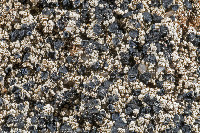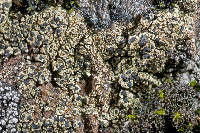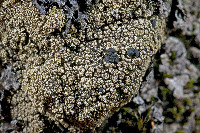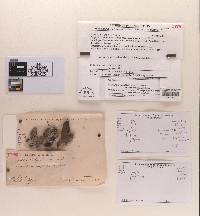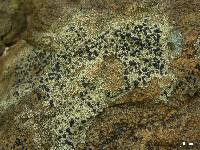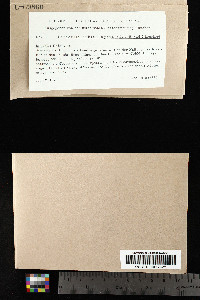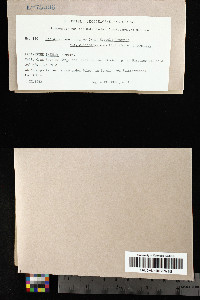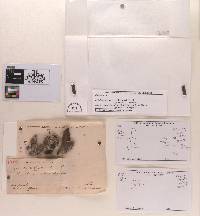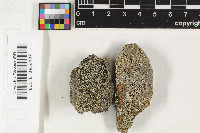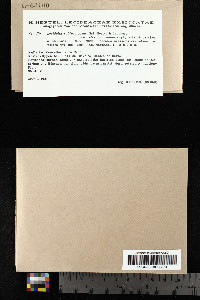
Consortium of Lichen Herbaria
- building a Global Consortium of Bryophytes and Lichens as keystones of cryptobiotic communities -
- Home
- Search
- Images
- Species Checklists
- US States: O-Z >
- US National Parks
- Central America
- South America
- US National Parks
- Southern Subpolar Region
|
|
|
|
Family: Lecanoraceae
[Lecidea alienata Nyl., moreLecidea asema Nyl., Lecidea catalinaria Stizenb., Lecidea effugiens Nilson, Lecidea elaeochromoides (Nyl.) Flagey, Lecidea parasema var. elaeochromoides Nyl., Lecidea polyantha Taylor ex Leight., Lecidea subincongrua Nyl., Lecidea subincongrua f. elaeochromoides (Nyl.) H. Magn., Lecidea subincongrua f. subincongrua Nyl., Lecidea subincongrua var. elaeochromoides (Nyl.) Poelt, Lecidea subincongrua var. subincongrua Nyl., Lecidea vulgata f. effugiens (Nilson) Zahlbr., Lecidella asema var. elaeochromoides (Nyl.) Nimis & Tretiach, Lecidella elaeochromoides (Nyl.) Knoph & Hertel, Lecidella polyantha Taylor ex Leight., Lecidella subincongrua var. elaeochromoides (Nyl.) Hertel & Leuckert, Lithographa larbalestieri Leight.] |
Nash, T.H., Ryan, B.D., Gries, C., Bungartz, F., (eds.) 2004. Lichen Flora of the Greater Sonoran Desert Region. Vol 2. Thallus: crustose, strongly rimose to areolate, up to 1.8 mm thick; prothallus: absent surface: white, yellowish white or yellowish green, older herbarium specimens grayish white to black, dull or glossy, smooth or dissolved into sorediate- or isidia-like structures, very variable Apothecia: black or hyaline to brown if damaged, sessile, strongly constricted at base, 0.5-1.5 mm in diam. disc: black, plane to convex, epruinose margin: distinct, 0.05-0.1 mm thick, persistent exciple: pale to rarely strongly greenish black or sometimes hyaline, without algal cells parathecium: pale brown, often with crystals epihymenium: blackish green to bluish green or rarely olivaceous hymenium: hyaline, 55-90 µm tall, not inspersed; paraphyses: simple, rarely anastomosing or branched, slightly thickened apically hypothecium: pale brown to pale reddish brown asci: clavate, lecanoral, 8-spored ascospores: hyaline, simple, ellipsoid, 9-16 x 5.5-8 µm; wall: thick and smooth, not halonate Pycnidia: globular, with Vobis-type III conidiophores conidia: filiform, strongly curved, 2030 µm long Spot tests: thallus surface K- to rarely K+ yellow, C+ yellowish red, KC+ yellowish red, P- to rarely P+ yellow Secondary metabolites: 2,4-dichloronorlichexanthone, 2,5-dichloronorlichexanthone, 2,7-dichloro-6-O-methylnorlichexanthone, 2,7-dichloronorlichexanthone, 3-O-methylasemone (=4,5,7-trichloro-3-Omethylnorlichexanthone), 3-O-methylthiophanic acid (=2,4,5,7-tetrachloro-3-O-methylnorlichexanthone), 4,5-dichloro-3-O-methylnorlichexanthone, 4,5-dichloro-6O-methylnorlichexanthone, 4,5-dichloronorlichexanthone, arthothelin (2,4,5-trichloronorlichexanthone), asemone (= 4,5,7-trichloronorlichexanthone), atranorin, chloroatranorin, isoarthothelin (=2,5,7-trichloronorlichexanthone), thiophanic acid (=2,4,5,7-tetrachloronorlichexanthone), and thuringione (=2,4,5-trichloro-3-O-methylnorlichexanthone). Substrate and ecology: on soil, wood, bark, or non-calciferous rocks World distribution: North Africa, and temperate parts of Asia, Europe, and North America Sonoran distribution: Arizona and coastal California, Baja California, Baja California Sur and Sonora. Notes: One specimen from California has soralia. According to the thallus morphology and chemistry, this specimen belongs to L. asema and not to L. scabra or L. meiococca. The species usually grows on non-calciferous rocks, rarely on soil, bark or wood. See Leuckert et al. (1992) for a discussion of the chemistry. |
|
|
|
Powered by Symbiota




